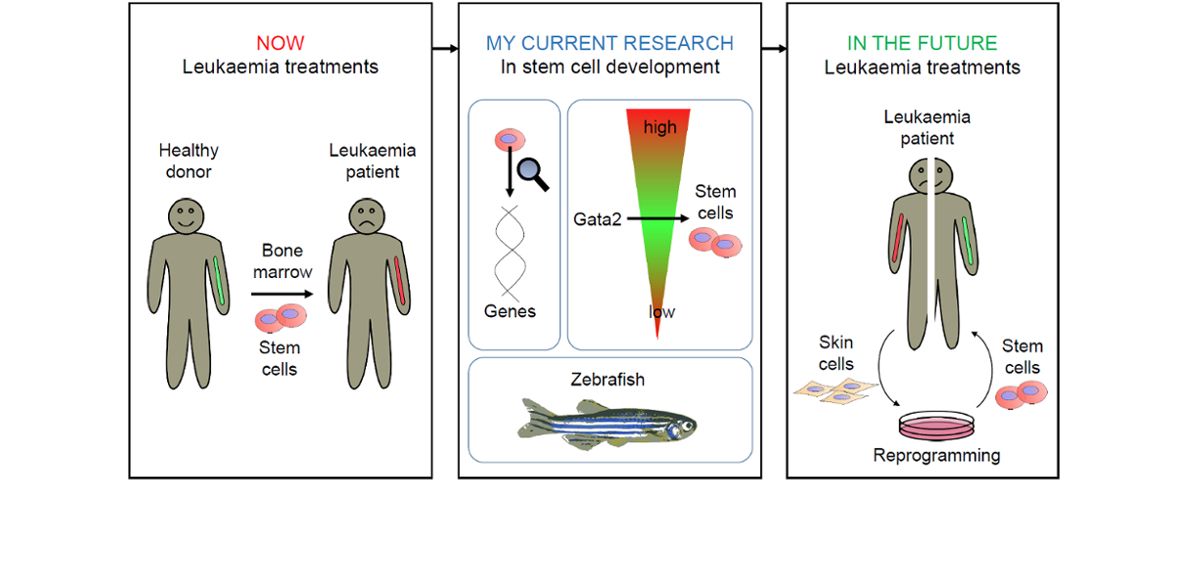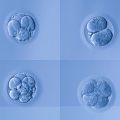
Image copyright Tomasz Dobrzycki. Reproduction prohibited without permission.
3 Minute Thesis: Leukaemia research
Think of 'an academic' and your stereotype may well include a tendency to wordiness. In truth, while some may live up to that image, academic presentation is usually about distilling information rather than padding it.
Even so, summing up your entire doctorate in three minutes is a challenge. That's about 400 - 500 words, compared to the 80,000 word limit for a doctoral thesis (this blog intro is 185 - or something over a minute). Yet, that's the challenge of the 3 Minute Thesis (3MT), a competition originally developed by The University of Queensland. It aims to cultivate students' academic, presentation, and research communication skills. The competition supports their capacity to effectively explain their research in three minutes, in a language appropriate to a non-specialist audience.
Recently, seven doctoral students from across the University of Oxford competed in the University's 3MT final. Both the winner and runner-up were from Oxford's Medical Sciences Division: Lien Davidson and Tomasz Dobrzycki.
Earlier this week, we published Lien Davidson's 3 Minute Thesis. Now, it's the turn of Tomasz Dobrzycki, a researcher in the MRC Weatherall Institute of Molecular Medicine, part of the Radcliffe Department of Medicine.
Tomasz Dobrzycki: Leukaemia research
Last year I registered as a bone marrow donor. If any of you have done it, you know it's a very simple process: you spit in a cup, fill in a form and one day you may save a life.
Although my research may only explain very few of the steps, if the research around the world goes hand in hand, maybe if any of us ever needs a bone marrow transplant, we won't need to wait until somebody spits in a cup.
Tomasz Dobrzycki, Weatherall Institute of Molecular Medicine
Why? Because the bone marrow contains stem cells that can regenerate a whole blood system and these cells are routinely transplanted to help people with leukaemia.
But here's bad news: It's not always easy to find a perfectly matching donor and so one in three people after receiving the transplant may suffer from life-threatening complications. So rather than getting everyone spitting in a cup, there must be a better way to help.
Imagine if we could take skin cells from the perfect donor – the patient themselves - and play with them in a dish to reprogram them to become very efficient, personalised blood stem cells for transplants – that would be great!
But we can't.
We can't, because we can’t simply make the stem cells with a click of the fingers. The whole process of making a stem cell is more like a marathon run – thousands and thousands of steps. Now each of these steps results from the action of genes, the carriers of information and instructions in our cells, made up of the DNA. The genes have specific roles, they work together and form networks to make sure that every cell appears when and where it has to.
The gene that I’m looking at in my PhD project is called Gata2. Gata2 for the blood stem cell is a bit like food for a marathon runner. If you haven't had enough – you're probably not gonna finish. But if you've eaten too much – you're gonna struggle as well. So I'm investigating why the blood stem cell needs intermediate amounts of Gata2. And to understand this, I'm looking at probably the most natural setting – an embryo that is making the blood stem cells for the first time.
But don't worry – I'm not using human embryos. I'm using fish instead – the zebrafish.
Although the zebrafish looks quite different to us, the way their embryos make blood stem cells is almost exactly the same to the way we do it. So I took my fish, played with their genes and made embryos that have either too little or too much Gata2 and they don't make blood stem cells. And I'm looking at what changes in these embryos to better understand the function of Gata2 and explain its importance in a wider context. The motivation behind it is that maybe one day we'll be able to use this knowledge to recreate the whole stem cell marathon in a dish – step by step.
Although my research may only explain very few of the steps, if the research around the world goes hand in hand, maybe if any of us ever needs a bone marrow transplant, we won't need to wait until somebody spits in a cup.
 3 Minute Thesis: Embryos and Lasers
3 Minute Thesis: Embryos and Lasers